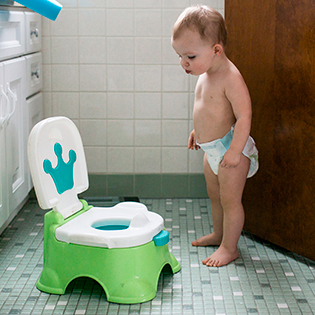When I was seven months pregnant with my daughter, I asked my HR department about maternity leave. I was stunned at the fact that I’d only get 12 weeks — especially when other countries like Canada, Norway and Sweden give moms upwards of one year of paid time off. As a single parent by choice, I was my child’s only option — I didn't have a partner who could step in when I returned to work. Thankfully, my HR director helped me strategize how to maximize my time off. I had to get creative and I ended up getting four months, which didn't feel like nearly enough.
In hindsight, I wish I had a guide that better explained my options. Even if I still only ended up with four months, I would have been better financially and mentally prepared if I had known what to expect ahead of time.
Preparing ahead for parental leave is especially important for single parents since you're your child's primary caregiver. Here's what single parents like myself, plus experts, recommend doing to make the most of your leave.
Research your state and federal benefits
"When planning for family leave, it's crucial to understand both federal and state benefits available to you," says employment lawyer J. Bernard Alexander III. "As a single parent, knowing what is available to you is vital, because there isn't a partner that can step in and take leave if you've misunderstood something."
At the federal level, the Family and Medical Leave Act (FMLA) provides eligible employees with up to 12 weeks of unpaid, job-protected leave per year.[1] However, the FMLA has a number of caveats: It only applies to companies with 50 or more employees within a 75-mile radius and requires employees to have worked there at least a year.
Read Next
Only 56% of U.S. employees qualify for the FMLA.[2] If you don't, "This is when you have to get creative," Alexander says. "You may have to use a combination of sick and vacation days and specific programs to assist you, which will vary by state."
If you live in California, Colorado, Connecticut, Massachusetts, New Jersey, New York, Oregon, Rhode Island, Washington, or Washington D.C., you can potentially take advantage of your state's paid family leave program. (Delaware, Maine, Maryland and Minnesota will also start offering paid family leave in 2026.)
Check your state's benefits page for more information on whether you qualify and how to enroll, but the amount you will receive varies based on where you live. For example, California will provide between 60 to 70% of your salary (depending on your income) for up to eight weeks,[3] while New York provides 67% for up to 12 weeks.[4]
Regardless of your state, consider taking advantage of federal programs like Temporary Assistance for Needy Families (TANF) and WIC, which provide financial help and food assistance to pregnant women, moms and children. You can use them to get free formula, food and cash assistance. Go to the official TANF or WIC sites to find eligibility requirements and contact information for your local office.
You can also Google terms like, "new parent financial assistance" or "social services office" followed by your city and state to find out about other grants and forms of assistance.
Budget for unpaid time off — and beyond
When preparing for parental leave, it's crucial to have adequate savings to cover the period, especially if you’re a one-salary household. Cut back on unessential expenses well before your baby arrives, and if you have any high-interest debt, try to consolidate it with a personal loan to lower payments.[5]
The Federal Trade Commission suggests creating a family budget to track the money coming in (if any) and going out.[6] (These family budgeting apps can help.) Adjust your budget to account for new expenses, such as child care and medical costs. Don't forget that you'll probably spend less on other categories, like travel and restaurants, when you're caring for a newborn. By seeing how much money you'll need, you can then set aside savings to cover that for unpaid leave.
Update your health insurance
Keeping your insurance information current is essential since you're the sole provider of medical benefits for your child. Before starting your leave, ensure that your health insurance adequately covers your child's needs by reviewing and updating your policy.
This involves verifying coverage for future check-ups, vaccinations and other medical care. Contact your insurance provider to find out how to add your newborn to your plan and understand the benefits and any associated costs. Doing so will help you manage health care expenses and ensure your child receives the necessary care without added financial stress during your leave.
For information on how to update your health insurance, start by consulting your benefits department. If your job doesn't offer benefits, visit Healthcare.gov for guidance on how to get your baby covered.
Negotiate reintegration to the workplace
When planning your return to work, try to negotiate a gradual reintegration with your employer to ease the transition. "Start by discussing flexible options such as part-time hours, a phased return or remote work for the first few weeks." Alexander says. "As a single parent, you will need that flexibility for emergencies." Clearly communicate your needs and propose a timeline that allows you to adjust, while ensuring your work responsibilities are met.
Start this negotiation process with your employer well before your planned return, ideally a couple months in advance. "This timing allows for a thorough discussion of your needs and gives your employer time to accommodate your requests," he says.
Make sure you point out how these accommodations would benefit your employer, too. For example, you could say something like, "I would like to discuss the possibility of a flexible work schedule when I return. I'm concerned that transitioning back to work will be challenging. Would it be possible to start at 25 hours the first week and work back to 40 hours over the next month? A gradual return would help me balance my new responsibilities as a parent so that I can maximize my productivity at work."
Find child care arrangements as early as possible
No matter how much time you have before returning to work, start looking for child care options early, preferably before you even go on leave. The last thing you want is to have your return-to-work date looming without a secure child care plan.
Utilize resources such as Child Care Aware of America; just type in your location and you'll get resources on finding quality, affordable child care in your area (essential for single parents with one salary).[7]
Knowing these tips would have been a great help to me when I was planning my leave. The process of going on leave can be overwhelming, but understanding these options and planning ahead can significantly ease the transition.













































 Trending On What to Expect
Trending On What to Expect





